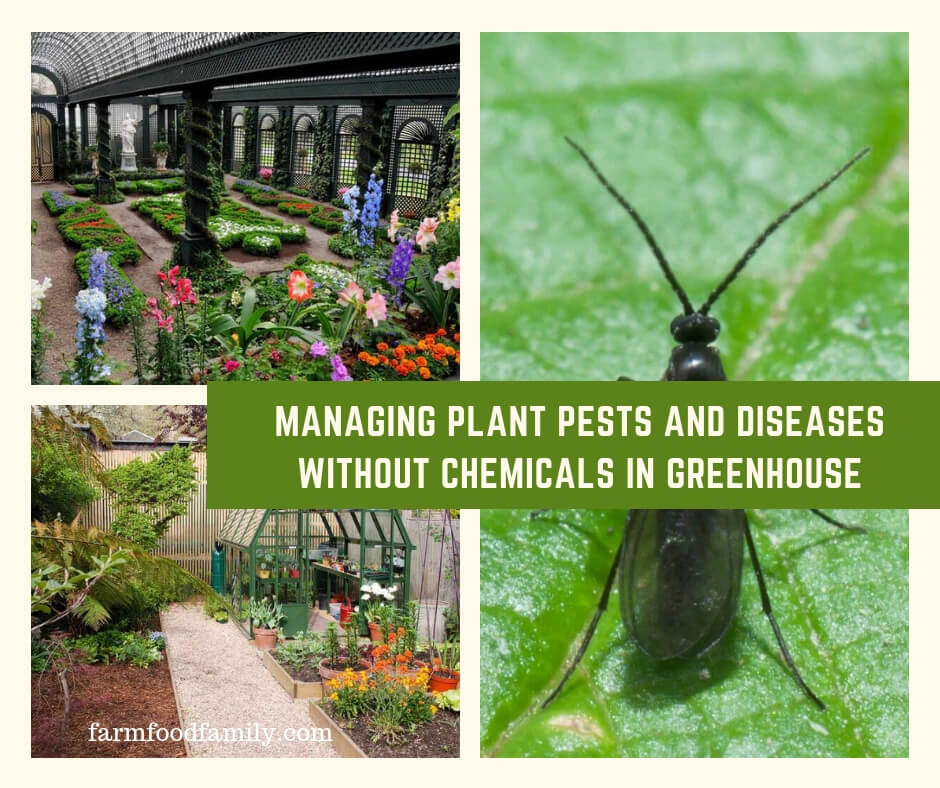Apply organic gardening methods in the greenhouse to control pests, and enjoy fresh flowers, herbs, and vegetables all year.
If the atmosphere in a well-managed greenhouse provides the perfect environment for plants, many pests and diseases find it just as cozy. Organic gardeners must stay vigilant to keep greenhouse problems under control.
Select and Site the Greenhouse

Once considered the province of the wealthy, manufacturers have made greenhouse gardening accessible to home gardeners with the production of high quality kits at reasonable prices.
Even if you’re new to greenhouse gardening, conventional wisdom states to buy the biggest greenhouse you can afford: gardeners always seem to wish they had purchased “the next size up” in a greenhouse.
Choose from an attached greenhouse or a freestanding greenhouse. Attached greenhouses have the advantage of piping in heat from the home, and their convenient location beckons gardeners in the winter.
Freestanding greenhouses receive light from all sides, and contain more room for plants. Whichever you choose, situate the greenhouse so that the largest side receives southern exposure for maximum light.
Sanitation

You can prevent a myriad of pest and disease problems by starting with good greenhouse hygiene. Only plants in excellent health deserve a coveted spot in the limited real estate of the greenhouse.
If you wish to maintain a plant sick bay, quarantine these plants in a separate cold frame or in a sunny window of your home. Scrub the interior and exterior greenhouse walls in the spring and fall, and let the greenhouse lie fallow each summer.
Temperature
You can choose to maintain a warm greenhouse for orchids and tropical plants, or a cool greenhouse for vegetables and perennials.
You must monitor your thermometer carefully and take steps to prevent the temperature from soaring during sunny winter days. Temperatures in excess of 85 degrees encourage lank plant growth and mildew outbreaks.
Use greenhouse fans to promote air circulation and vents to release stagnant air, but cover openings with fine mesh to exclude tiny winged pests.
Watering

Apply some of the same watering techniques in the greenhouse as you would to your outdoor garden to prevent mildew and fungus.
Water the plants in the morning so the sun’s warmth speeds evaporation. Avoid wetting the foliage of plants susceptible to mildew and fungal diseases, like roses and phlox.
Water your plants based on need and observation rather than a schedule, and err on the stingy side. Remember, the greenhouse is naturally a humid environment.
Pest and Disease Outbreaks
Sometimes problems erupt despite the best vigilance. Initiate treatment at the first sign of infestation for best results.
Aphids

- Use yellow sticky traps
- Purchase and release ladybugs
Fungus Gnats

- Clean all puddles and repair any leaks
- Apply the biological toxin Gnatrol to soil
Powdery Mildew

- Remove affected leaves
- Use a sulfur-based spray
- Dislodge pests with a blast of water
- Use fine horticultural oil
Thrips

- Use fine horticultural oil
- Dust with diatomaceous earth
Whiteflies
- Use yellow sticky traps
- Move all plants indoors for two days, and subject greenhouse to freezing temperatures


